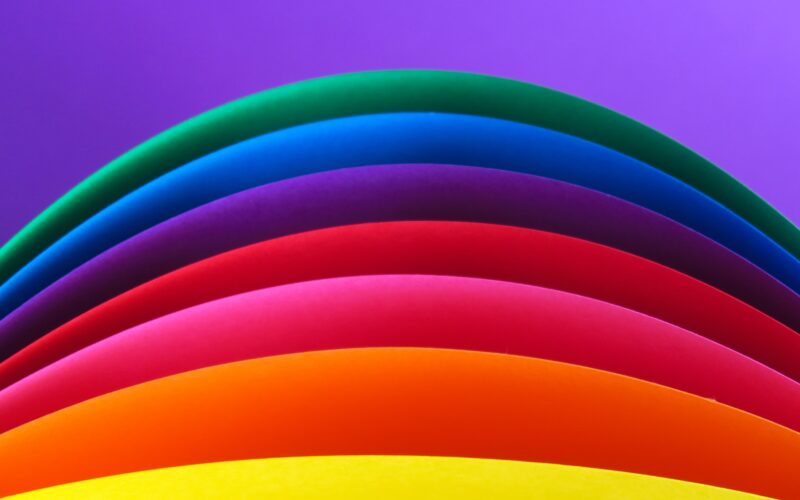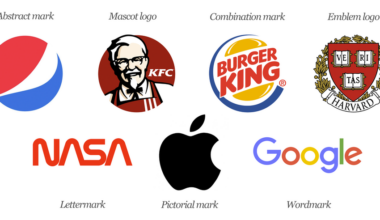Having Problems Choosing a Suitable Brand Color?
…there is so much more to colors we use to represent our brand!
Do you know that color plays an important role in how your brand is perceived?
Whether you’re a fashion brand trying to connect to a youthful audience or a medical supplies store trying to strengthen customer trust, you can study color meanings to help you better attract
and connect to your ideal customer.
Here’s the meaning of some brand colors and the effect that it can have on people:
Orange:
It stands for playfulness, vitality, and friendliness.
It is invigorating and evokes energy. Orange represents creativity, adventure, enthusiasm, success, and balance. Orange adds a bit of fun to any picture, website, or marketing material it is on.
Despite its attracting color, it is not as commanding as the color red. Many marketers still use the color for call to actions or areas of a website that they want to draw the eye too.
Red:
It signifies importance and command attention. The red color is associated with excitement, passion, danger, anger, energy, and action.
You might have noticed that some brands use red for ‘order now’ buttons or for their packaging as a way to stand out on the shelf.
Red is the most intense color and can provoke the strongest emotions. Red can also trigger danger, so you want to use the color sparingly.
Red tends to encourage appetite that is why brands like Coca Cola use it often in their branding.
They also use words like happiness in their branding, so they use red to build excitement.
YouTube uses red due to the excitement of watching videos online. Have you noticed that the red part of their logo is the play button which can help compel someone into action?
It encourages you to want to press play on their videos.
Yellow:
It evokes happiness, youth, and optimism, but can also seem attention-grabbing or affordable.
Yellow revolves around sunshine. It also depicts deceit and warning. Some brands choose to use a cheerful yellow color as the background or border for their website design.
You can also choose to use yellow for your ‘free shipping’ bar at the top of your website if it matches the rest of your website’s design.
A little touch of yellow can help your website visitors associate your store with something positive.
Green:
It evokes stability, prosperity, growth, and a connection to nature.
Green is highly connected to nature and money. Growth, fertility, health, and generosity are some of the positive color meanings for the color.
Green also carries some negative associations such as envy. If you are in the health or fitness niche, you might choose to add greener to your online store.
Blue:
Blue stands for professionalism, security, and formality.
It is mature and trustworthy. Stability, harmony, peace, calm and trust are just some of the feelings your customer may feel about your brand when you integrate blue into your branding.
Conversely, blue can also carry some negative color meanings such as depression and can bring about a sense of coldness. Some retailers add their guarantee, trust certification or free shipping icons in a blue color to strengthen the trust aspect the color is known for.
Oral B is a dental health brand that sells toothbrushes. Healthcare niches, like Oral B, typically use blue in their branding to help people associate the brand with a quality, reliable and safe product.
On the other hand, deeper blues offer corporate brands a sense of confidence and professionalism. However, overusing blue can make a brand appear cold and detached.
Purple:
Purple can signify royalty, creativity, and luxury.
It is connected to power, nobility, luxury, wisdom, and spirituality.
But avoid using the color too much as it can cause feelings of frustration. Some perceive its overuse as arrogant.
Pink:
Pink is a popular color for brands that primarily serve a female audience. It revolves around femininity, playfulness, immaturity, and unconditional love.
Some brands have chosen to use pink for the product packaging especially for girl’s toys.
Brown:
Brown creates a rugged, earthy, old-fashioned look or mood. Brown is an earthy color.
After all, it is the color of earth, wood, and stone. The color meaning for brown relates to comfort, security, and a down to earth nature.
In marketing, you will find that brown is often used for natural products and food.
White:
White showcases cleanliness, virtue, health or simplicity, innocence, goodness, and humility.
Keep in mind, that this is the meaning in North American culture. In some parts of the world, white has the opposite meaning. You will want to keep this in mind based on the target audience you serve.
White also has a negative side where it symbolizes sterility and cold.
On an ecommerce website, white tends to be the most used color. You will likely use it as the background color for your product photo.
Your pages will likely have a white background with a black font. This is because, black font on a white background is the best color combination for readability.
Grey:
Grey stands for neutrality. It can look subdued, classic, serious, mysterious, or mature. However, grey does carry some negative
connotations, particularly when it comes to depression and loss. Its absence of color makes it dull.
Grey can be used for font color, headers, graphics, and even products to appeal to a mass audience. Apple is an example of a brand who uses the color grey in their
branding.
After all, many of their laptops are in a grey or silver-tone as its neutral color does not put anyone off. Throughout their branding, you will see a balance between white, black, and grey used which can help maintain a clean, neutral look.
Black:
Black evokes a powerful, sophisticated, edgy, luxurious, and modern feeling.
Black is symbolic of mystery and elegance. In contrast, the color meaning can also evoke emotions such as sadness and anger. Many fashion retailers have used black in their logos.
Black is also a popular color for text as it is an easy color to read. Some brands choose to use black and white photos for lifestyle banner images or icons to create a certain tone or consistency on their website.
Black is a color retailer such as Chanel and Nike use.
Chanel uses black for their logo and has several black and white images on their website to maintain a consistent look.
Keep in mind that the effect of your branding colors depends on the style and design they are used in, as well as the color combinations you choose.




